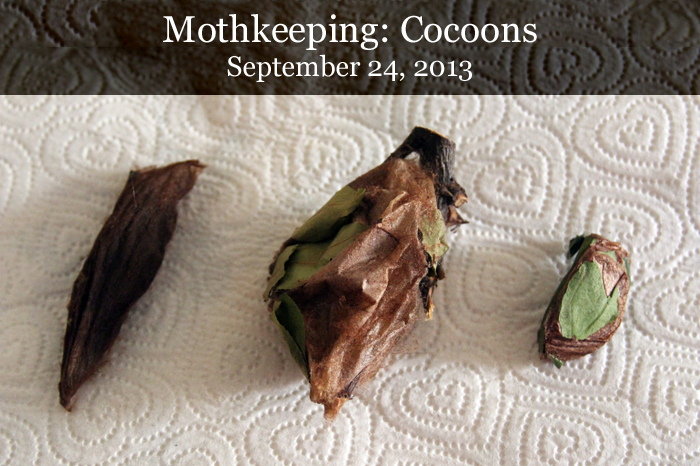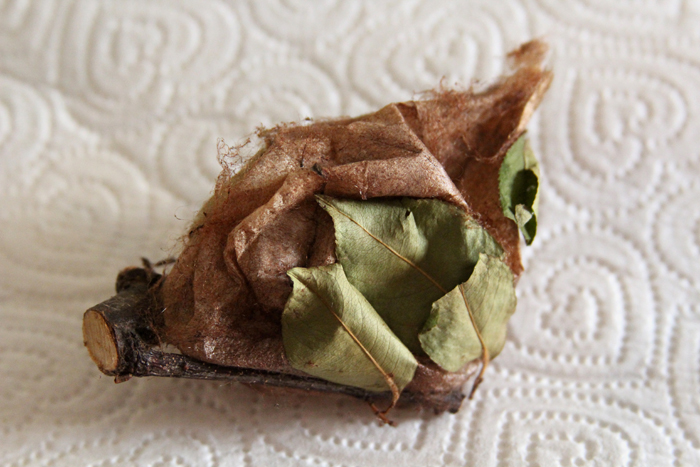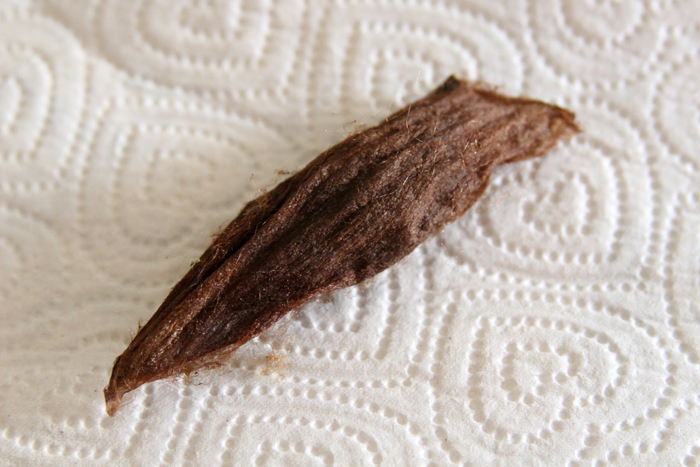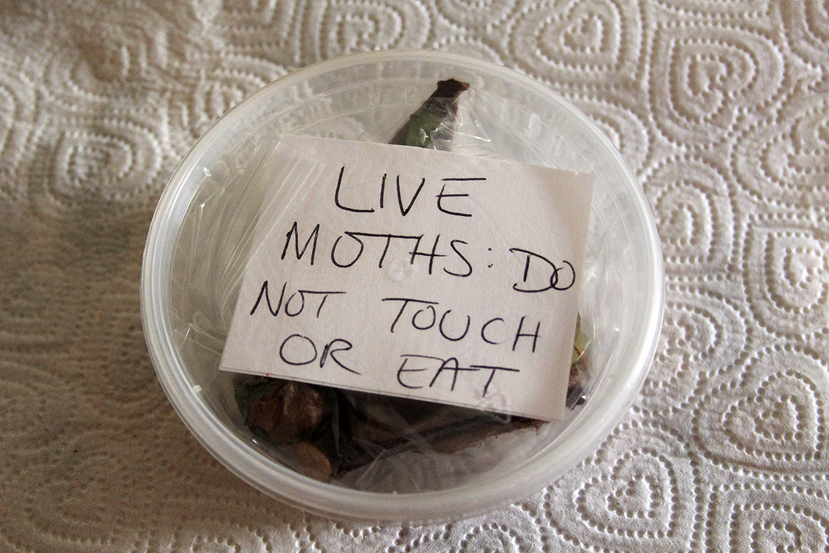The Cocoons Arrive

Not long after my rediscovery of my love for bugs, I decided I wanted to raise some moths in captivity in order to observe them, give them a comfortable life during their short time, and potentially preserve them after death. A little research led me to Pinebaskets, the site of a crafts artist and moth breeder who offers moth eggs and cocoons at various intervals during the year. I was originally only going to get a couple cecropias, but my dad wanted to see a luna moth, so I ordered one too. Yesterday, the cocoons arrived safe and sound.
Though I can’t sex the moths from the cocoons as they are, I could easily tell which were the cecropias and which was the luna. The cecropia cocoons were much larger, which makes sense since the resulting moth is larger, too. The pair I received displayed an interesting difference in cocoon construction – one was slender and tight, the other loose and thick. Apparently, it makes no difference to the pupae inside.

This cecropia cocoon is baggy; it was spun with a branch and leaves, some of which remains attached.

This cocoon is longer and thinner, free of leaves but otherwise identical in texture.
If the pupae inside a cocoon feels weightless, it has died. I held each cocoon gently after taking photos and felt a healthy weight inside them all. Later, I may decide to carefully make a slit in the cocoons to check on the pupae inside, but I figured they’ve probably had enough trauma for now being bounced around in the mail. Checking on the pupae will allow me to determine the sexes of the moths. My gut guess is two boys and a girl.

This smaller cocoon houses the luna moth.
I had already read up on what to do with the cocoons until spring; the instructions included by the breeder were what I expected. After I was done checking the cocoons, I placed them in a ziploc bag and tucked it back into the container they came in. And then, that went in the fridge.

Snug and safe in a container for their simulated overwintering.
I plan to check on the moths periodically throughout the winter and update on the status of the cocoons. When spring comes, they’ll be taken out and exposed to the warm air, which should encourage them to emerge in a matter of weeks. There will be plenty of pictures and journal entries then! It’s going to be really hard to wait!

 Posted by Mary in
Posted by Mary in 





